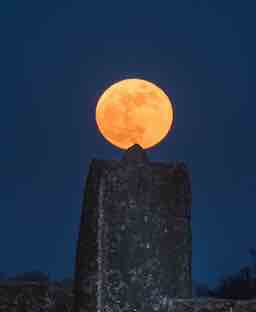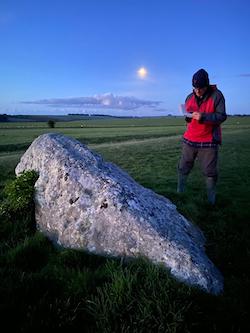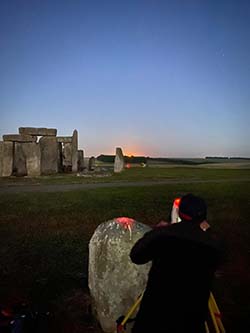
Stonehenge and the major standstill moon
A major lunar standstill happens only once every 18.6 years. Within a year or so either side of it, the moon can be seen from time to time rising or setting unusually far to the north or south. The longer sides of the Station Stone rectangle at Stonehenge, perpendicular to the main solstitial axis, align with the northernmost possible setting and southernmost possible rising positions of the moon. Researchers have debated for years whether this was deliberate—and, if so, how this was achieved and what might have been its purpose.
A major lunar standstill took place in January 2025, meaning that during last year and this there have been rare opportunities to observe the moon rising or setting in line with the Station Stones. During this period I have been working with my colleagues Amanda Chadburn and Fabio Silva to observe this phenomenon at first hand as part of a broader research project to try to resolve some of the outstanding issues.

Unlike the sun, tracking the moon’s extremes isn’t straightforward, requiring specific timing and weather conditions. The weather scotched many of our attempts to observe the extreme moonrises and sets, including one that was livestreamed by English Heritage on the evening of June 21, 2024. (Fortunately, we were blessed with near-perfect conditions on the following evening: see picture—click on it to enlarge.) EH hosted a series of events during the autumn, including talks, a pop-up planetarium, stargazing and storytelling sessions, and a display ran in the Visitor Centre exhibition space from October to January.

In the research project itself we have been addressing a range of problems, such as: Were the sightlines deliberate? If so, what was their intended precision? Also, what were the practicalities of making the observations, and how might these have operated as part of the observances or ceremonials that doubtless accompanied them? And are any recommendations needed with regard to World Heritage Site management?
Along the way we have been ground-truthing the theoretical calculations of Stonehenge’s lunar sightlines, making allowance for the shift in the moon’s extreme position over the past 4500 years; undertaking site surveys and georeferencing past archaeological excavations, which were undertaken before accurate GPS was available; viewing the effects of the extreme moonrises and moonsets on Stonehenge itself (e.g. shadows, other visual effects); viewing the impacts of modern features such as traffic and tree plantations during these astronomical events; and taking photographs to record these rare astronomical phenomena in relation to the Station Stones and sightlines.
My colleagues and I are now preparing our research reports and I have been/shall be presenting some of our preliminary findings in talks including at the INSAP 2025 conference in Belfast, the Chau Chak Wing Museum in Sydney, the "Oxford XIII" symposium on archaeoastronomy in Melbourne, the Fiske Planetarium in Boulder, Colorado, the Friends of the Royal Astronomical Society in London, and to various local archaeological and astronomical societies around the UK.
Top photo © André Pattenden/English Heritage. Middle and bottom photos © Amanda Chadburn.















 If you are looking for things related to Alice and/or information about stalking, please visit the
If you are looking for things related to Alice and/or information about stalking, please visit the